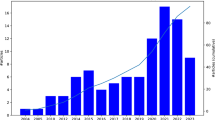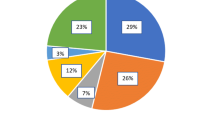Abstract
Acceptance sampling plans are a cross-functional quality control instrument for benchmarking compliant standards of incoming as well as outgoing lots. The multiple dependent state (MDS) plan has been proposed and proven to advantage the conventional single sampling plan (SSP). However, the MDS plan presents a contradictory situation: Its performance depreciates as the number of previously considered lots increases. This outcome implies that the greater the number of cumulative lot-sentencing results one intends to include is, the greater the sample size is required for inspection, where a loosened criterion for quality acceptance levels, unfavorably, is introduced as well. Therefore, we proposed a modified MDS plan that depends on the loss-based capability index to accommodate an adjustable mechanism, namely, the adjustable multiple dependent state (AMDS) sampling plan. The AMDS plan allows encompassing not only a greater number of preceding lots in the lot disposition decision but also reducing the sample size required for the inspection and raising the lot-sentencing quality standards to stimulate the supplier attaining with persistently reliable submissions for a long-term supplier-consumer relationship. In comparison to the plans’ performance, our proposed AMDS plans demonstrate superior cost-effectiveness, discriminatory powers, and average run lengths than those of the SSP and MDS sampling plans. Furthermore, we tabulated the plan parameters under numerous conditions and delivered a real industry case to demonstrate its applicability.










Similar content being viewed by others
References
Arizono I, Miyazaki T, Takemoto Y (2013) Variable sampling inspection plans with screening indexed by Taguchi’s quality loss for optimising average total inspection. Int J Prod Res 52:405–418
Aslam M, Yen CH, Chang CH, Jun CH (2014) Multiple dependent state variable sampling plans with process loss consideration. Int J Adv Manuf Technol 71:1337–1343
Aslam M, Balamurali S, Jun CH (2019a) A new multiple dependent state sampling plan based on the process capability index. Commun Statistics: Simulation and Computation. https://doi.org/10.1080/03610918.2019.1588307
Aslam M, Azam M, Albassam M (2019b) Sampling plan using process loss index using multiple dependent state sampling under neutrosophic statistics. IEEE Access. https://doi.org/10.1109/ACCESS.2019.2906408
Boyles RA (1991) The Taguchi capability index. J Qual Technol 23:17–26
Cao M, Zhang Q (2010) Supply chain collaborative advantage: a firm’s perspective. Int J Prod Econ 128(1):358–367
Chan LK, Cheng SW, Spiring FA (1988) A new measure of process capability Cpm. J Qual Technol 20(3):162–175
Fernández AJ (2016) Explicit quasi-optimal inspection schemes from nonconformity count data with controlled producer and consumer risks. Appl Math Model 40(23):10616–10630
Hsiang TC, Taguchi G (1985) A tutorial on quality control and assurance – the Taguchi methods. Joint Meetings of the American Statistical Association, Las Vegas
Johnson, S.G., 2018. The NLopt nonlinear-optimization package, http://ab-initio.mit.edu/nlopt. Accessed 18 Oct 2019
Kane VE (1986) Process capability indices. J Qual Technol 18(1):41–52
Montgomery DC (2009) Statistical quality control, a modern introduction, 6th edn. New York, John Wiley & Sons
Pearn WL, Shu MH (2003) Lower confidence bounds with sample size information of Cpm applied to production yield assurance. Int J Prod Res 41(15):3581–3599
Pearn WL, Wu CW (2007) An effective decision making method for product acceptance. Omega: The International Journal of Management Science 35(1):12–21
Powell MJD (1998) Direct search algorithms for optimization calculations. Acta Numerica 7:287–336
R Core Team (2020) R: a language and environment for statistical computing. R Foundation for Statistical Computing, Vienna URL http://www.R-project.org/. Accessed 15 Feb 2020
Ruczinski I, 1996. The relation between Cpm and the degree of Includence. Doctoral Dissertation, University of Würzberg, Würzberg
Samsung Electro-Mechanics, Passive Component/Chip Resistor. Retrieved December 1, 2019, from http://www.samsungsem.co.kr/global/product/passive-component/chip-resistor/general-resistor/index.jsp
Schilling EG (2005) Average run length and the oc curve of sampling plans. Qual Eng 17(3):399–404
Schilling EG and Neubauer DV, 2017. Acceptance sampling in quality control. 3rd, CRC Press
Vännman K, Kotz S (1995) A superstructure of capability indices: distributional properties and implications. Scand J Stat 22(4):477–491
Wang ZH, Wu CW (2019) Improved inspection scheme with a loss-based capability index. Int J Adv Manuf Technol 104:1321–1331
Wu CW, Wang ZH (2017) Developing a variables multiple dependent state sampling plan with simultaneous consideration of process yield and quality loss. Int J Prod Res 55(8):2351–2364
Wu CW, Lee AHI, Chen YW (2015a) A novel lot sentencing method by variables inspection considering multiple dependent state. Qual Reliab Eng Int 32:985–994
Wu CW, Wang ZH, Shu MH (2015b) A lots-dependent variables sampling plan considering supplier’s process loss and buyer’s stipulated specifications requirement. Int J Prod Res 53(60):6308–6319
Wu CW, Shu MH, Chang YN (2018) Variable-sampling plans based on lifetime-performance index under exponential distribution with censoring and its extensions. Appl Math Model 55:81–93
Funding
This work was partially supported by the Ministry of Science and Technology of Taiwan under grant no. MOST 107-2221-E-992-064-MY3.
Author information
Authors and Affiliations
Corresponding author
Additional information
Publisher’s note
Springer Nature remains neutral with regard to jurisdictional claims in published maps and institutional affiliations.
Rights and permissions
About this article
Cite this article
Hsu, BM., Shu, MH. & Wang, TC. Variables adjustable multiple dependent state sampling plans with a loss-based capability index. Int J Adv Manuf Technol 107, 2163–2175 (2020). https://doi.org/10.1007/s00170-020-05137-9
Received:
Accepted:
Published:
Issue Date:
DOI: https://doi.org/10.1007/s00170-020-05137-9




